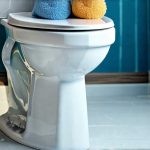The relentless urge to rush to the toilet can be incredibly disruptive, impacting daily life in ways many people don’t fully appreciate. It’s not merely an inconvenience; it creates anxiety, limits spontaneity, and often leads to social withdrawal as individuals become preoccupied with proximity to restrooms or fear embarrassing accidents. While occasional urgency is normal – we all experience it from time to time – a persistent need to rush can signal underlying issues or simply develop from habits that exacerbate the sensation. Understanding the factors contributing to this feeling and adopting proactive daily practices can significantly improve comfort, control, and overall quality of life. This article explores accessible strategies aimed at easing urgency, focusing on lifestyle adjustments rather than medical interventions, always emphasizing the importance of consulting with a healthcare professional for personalized advice.
Many individuals find themselves in a cycle where anxiety about needing to rush becomes part of the problem. The fear itself can trigger physiological responses mimicking urgency, creating a self-fulfilling prophecy. This is where mindful awareness and behavioral changes become powerful tools. It’s important to remember that regaining control isn’t about eliminating the sensation entirely; it’s about managing it effectively and reducing its impact on your daily routines. The following practices are designed to address both the physical and psychological aspects of this often-troubling experience, promoting a sense of calm and confidence rather than constant worry. Practicing regular breathing exercises can help with this – explore techniques for calming bladder nerves to reduce anxiety.
Dietary Adjustments for Bladder & Bowel Health
Diet plays a surprisingly large role in bladder and bowel function. Certain foods and beverages can act as irritants, intensifying urgency or triggering unwanted sensations. While individual sensitivities vary greatly – what bothers one person might not affect another – there are common culprits worth considering. Caffeine, for example, is well-known diuretic, increasing urine production and potentially exacerbating urgency. Similarly, alcohol acts as a bladder irritant, loosening the muscles that control urination. Carbonated beverages can also contribute to bloating and pressure, triggering the need to go. Spicy foods, acidic fruits (citrus, tomatoes), and artificial sweeteners are other potential offenders for some individuals.
Making gradual dietary changes is often more effective than attempting drastic restrictions. Start by identifying your personal triggers through careful observation. Keep a food diary alongside a log of urgency episodes; this can reveal patterns and pinpoint specific items that seem to contribute to the problem. Instead of completely eliminating potentially irritating foods, try reducing their intake or consuming them less frequently. Focus on incorporating bladder-friendly options into your diet, such as water-rich vegetables (cucumber, celery), fiber-rich fruits (bananas, blueberries), and lean proteins. Hydration is key, but it’s about how you hydrate—sipping water throughout the day rather than gulping large amounts at once helps to avoid sudden surges of urine production. Consider utilizing food tools for tracking triggers in your diet.
Furthermore, consider the timing of your fluid intake. Reducing fluids a few hours before bedtime can minimize nighttime awakenings and reduce urgency. Pay attention to bowel habits too; constipation can put extra pressure on the bladder, worsening symptoms. A diet rich in fiber and adequate hydration is crucial for maintaining regular bowel movements. Ultimately, dietary adjustments are about finding a balance that works for you, minimizing irritation while still enjoying a varied and nutritious diet.
Strengthening Pelvic Floor Muscles
A weak pelvic floor can significantly contribute to urinary urgency and incontinence. These muscles – often described as the “core” of your pelvic region – support the bladder, bowel, and uterus (in women), providing essential control over urination and defecation. When these muscles are weakened due to factors like pregnancy, childbirth, aging, or chronic straining, it can lead to a feeling of urgency and difficulty holding onto urine or stool. Kegel exercises, also known as pelvic floor muscle training, offer a non-invasive way to strengthen these vital muscles.
The key to effective Kegels is performing them correctly. To identify your pelvic floor muscles, imagine you are trying to stop the flow of urine midstream (though this should not be done regularly as it can interfere with normal bladder function). The sensation you feel when contracting those muscles is what you’re aiming for. – Begin by finding a comfortable position – sitting, lying down, or standing. – Contract your pelvic floor muscles, holding for 3-5 seconds. – Relax for the same amount of time. – Repeat this sequence 10-15 times. Start with a few sets per day and gradually increase the number as you gain strength. To further support pelvic health, explore daily practices for male pelvic health.
Consistency is crucial; aim to incorporate Kegels into your daily routine. You can do them while waiting in line, watching television, or even during work breaks. It’s important not to hold your breath or contract other muscle groups (like abdominal muscles) while doing Kegels. If you are unsure about proper form, consider consulting a physical therapist specializing in pelvic floor health. They can provide personalized guidance and ensure you’re performing the exercises correctly for maximum benefit.
Mindful Bladder/Bowel Habits
Often, we develop habits that inadvertently contribute to urgency. These can be as simple as going to the toilet “just in case” or rushing through the process without fully emptying the bladder or bowel. Mindful elimination involves consciously changing these habits and adopting a more deliberate approach to urination and defecation. This doesn’t mean holding onto urges for extended periods; it means responding to your body’s signals with awareness and control.
One common practice is scheduled voiding. This involves going to the toilet at regular intervals throughout the day, even if you don’t feel a strong urge. Start by setting a timer for every 2-3 hours and using the restroom when the alarm goes off. Gradually increase the time between voids as your bladder control improves. The goal isn’t to suppress urges but to retrain your bladder to hold more urine comfortably. Similarly, avoid “hovering” over the toilet seat, as this can prevent complete emptying and weaken pelvic floor muscles. Take your time when using the restroom, allowing for full relaxation and proper elimination. Consider incorporating daily mindfulness into your routine to reduce urgency.
For bowel movements, prioritize a comfortable posture – using a footstool to elevate your knees can help create a more natural angle, making it easier to eliminate fully. Avoid straining during bowel movements, as this can damage pelvic floor muscles and contribute to constipation. Listen to your body’s signals and respond promptly when you feel the urge to go, but avoid rushing or forcing the process. Mindful elimination is about fostering a healthier relationship with your bladder and bowels, promoting control and reducing anxiety.
Breathing & Relaxation Techniques
Urgency often triggers a stress response, leading to muscle tension and heightened anxiety. Deep breathing exercises can help counteract this effect, calming the nervous system and reducing the sensation of urgency. Diaphragmatic breathing – also known as belly breathing – involves consciously focusing on expanding your abdomen while inhaling and contracting it while exhaling. This type of breathing stimulates the parasympathetic nervous system, which is responsible for promoting relaxation and slowing heart rate.
- Find a quiet place where you can sit or lie down comfortably. – Place one hand on your chest and the other on your abdomen. – Slowly inhale through your nose, allowing your abdomen to rise while keeping your chest relatively still. – Exhale slowly through your mouth, letting your abdomen fall. – Repeat this process for 5-10 minutes, focusing on your breath.
Another effective technique is progressive muscle relaxation. This involves systematically tensing and relaxing different muscle groups in the body, starting with your toes and working your way up to your head. By consciously releasing tension, you can reduce overall stress levels and alleviate feelings of urgency. Regular practice of breathing and relaxation techniques can help cultivate a sense of calm and control, reducing anxiety and minimizing the impact of urgent sensations. These aren’t quick fixes but rather skills that require consistent effort and practice, offering long-term benefits for both physical and emotional wellbeing. You might find daily stillness practices helpful in managing anxiety.
It’s vital to remember this article provides general information only. If you are experiencing persistent or severe urgency, it is essential to consult with a healthcare professional to rule out any underlying medical conditions and receive personalized guidance tailored to your specific needs. Learning to manage stress through managing work stress can also play a significant role in overall wellbeing.





















